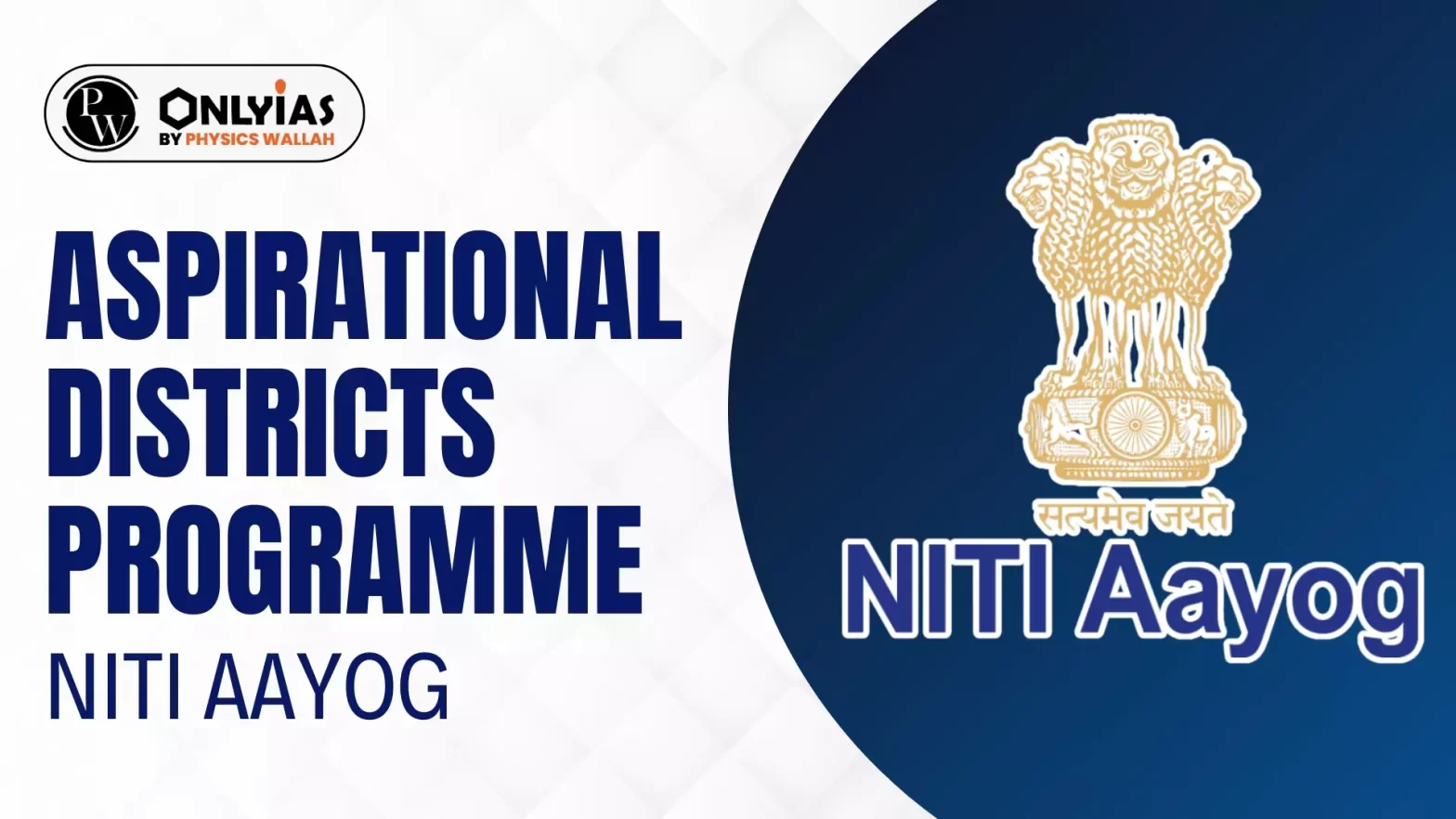Aspirational Districts Programme is an initiative of the Indian government to improve the living standards of people in under-developed districts.

Recently, Union Minister of Housing & Urban Affairs informed that Sonbhadra is among the top five districts out of 112 in the overall performance of the Aspirational Districts Programme continuously from January 2018 to March 2024.
Aspirational Districts Programme is an initiative of the Indian government to improve the living standards of people in under-developed districts. Underdeveloped districts are renamed as Aspirational districts, which are affected by poor socio-economic indicators.
Districts are selected under the programme through their score in Composite Index, which is calculated using data from core sectors of poverty, health & nutrition, education and basic infrastructure.
| Criteria | Category | Weightage |
| Landless households dependent on manual labour | Poverty | 25% |
| Medical care during pregnancy – 4 visits for Antenatal Care (ANCs) | Health and Nutrition | 7.5% |
| Institutional delivery | 7.5% | |
| Stunting of children below 5 years | 7.5% | |
| Wasting in children below 5 years | 7.5% | |
| Elementary Dropout Rate | Education | 7.5% |
| Poor Student Teacher Ratio | 7.5% | |
| Un-electrified households | Basic Infrastructure | 7.5% |
| Rural households without individual toilets | 7.5% | |
| Un-connected habitations under Pradhan Mantri Gramin Sadak Yojana | 7.5% | |
| Rural habitations without access to the minimum prescribed Water & Sanitation quantity of water | 7.5% |
The ranking of districts is based on 49 Key Performance Indicators (KPIs) under 5 broad socio-economic themes –
| Theme | Weightage | Indicators |
| Health & Nutrition | 30% | Health and Nutrition has 13 indicators covering antenatal care, postnatal care, gender parity, health of new – borns, growth of children, contagious diseases, and health infrastructure. |
| Education | 30% | Education has 8 indicators covering learning outcomes (transition from primary to upper primary, average scores in mathematics and language etc.), infrastructure (toilet access for girls, drinking water, electricity supply) and institutional indicators (Pupil-teacher ratio, timely delivery of textbooks). |
| Agriculture & Water Resources | 20% | Agriculture and Water Resources has 10 indicators, covering outputs (yield, price realisation etc.), inputs (quality seed distribution, soil health cards), and institutional support (crop insurance, artificial insemination, animal vaccination etc.). |
| Financial Inclusion & Skill Development | 10% | Financial inclusion has 6 indicators such as central government schemes (Atal Pension Yojana, Pradhan Mantri Jeevan Jyoti Bima Yojana etc.), reach of institutional banking (Jan Dhan Yojana), and institutional financing for small businesses (Mudra loans).
Skill development has 5 indicators tracking the skilling of youth, employment, and the skilling of vulnerable/marginalized groups. |
| Infrastructure | 10% | Infrastructure has 7 indicators that include household toilets, drinking water, electricity, and road connectivity. |
Strength |
|
Weakness |
|
Opportunity |
|
Threat |
|
It seeks to improve the performance of blocks that are lagging on various development parameters. It covers 500 districts across 31 states and Union Territories, with majority of them in the states of Uttar Pradesh, Bihar, Madhya Pradesh, Jharkhand, Odisha and West Bengal.
| Must Read | |
| NCERT Notes For UPSC | UPSC Daily Current Affairs |
| UPSC Blogs | UPSC Daily Editorials |
| Daily Current Affairs Quiz | Daily Main Answer Writing |
| UPSC Mains Previous Year Papers | UPSC Test Series 2024 |
It is an initiative of the Indian government to improve the living standards of people in under-developed districts.
To improve the quality of life of people living in backward and underdeveloped districts of the country.
Through score in Composite Index, which is calculated using data from core sectors of poverty, health & nutrition, education and basic infrastructure.
NITI Aayog is responsible for steering the programme.

<div class="new-fform">
</div>